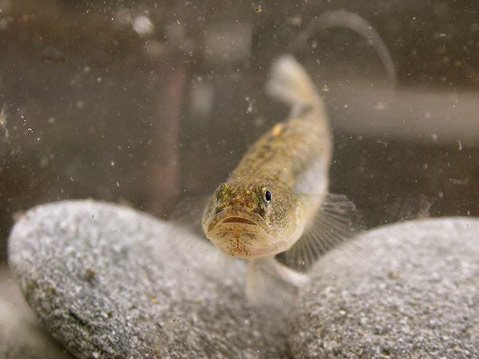200 More Acres for Tidewater Goby
Revised Critical Habitat for Endangered Fish Boosts Santa Barbara County's Acreage

A revised federal plan would set aside an additional 200 acres of Santa Barbara County land as critical habitat for the endangered tidewater goby, a tiny fish that lives in lagoons and estuaries but can travel through the sea to other bodies of brackish water following storm events. The revision — which was mandated following a 2009 lawsuit by the Natural Resources Defense Council (NRDC) over the U.S. Fish and Wildlife Service’s first critical habitat proposal — would bring the county’s total to 703 acres of critical habitat, a designation that only requires action on the part of landowners when a federal agency is involved or funding a project.
Altogether, the plan is about a decade in the making, said Fish & Wildlife biologist Chris Dellith, who explained that the fish was originally going to be delisted from the endangered species list in the late 1990s until experts realized that it remained at risk of extinction due to its unique behavior. “We were provided with additional information showing us that the delisting wasn’t warranted,” said Dellith, explaining that the goby exists in “meta-populations” that could easily be wiped out by droughts or other drastic events. “So the critical habitat that was designated back then fell way short.”
By the time the feds presented a new critical habitat plan in 2009, both they and others, such as the NRDC, realized that there were new tools available to track goby populations. “We’ve used the best available science,” said Dellith. “This time around, we’ve factored in climate change and the potential for sea level rise and its impacts on goby habitat.” The service was also able to use better mapping technology and enhanced genetic information on the species, which helped track these meta-populations, and focused on the recovery plan more as a guideline for the critical habitat.
Statewide, the revised plan encompasses 12,157 acres of critical habitat, from Del Norte to San Diego counties, an increase of 2,150 acres. In Santa Barbara County, the largest habitat is along the Santa Maria River, where 474 acres will be affected (up from 468, including 432 acres of privately owned land), but the biggest boost by far is in the Goleta Slough, where 190 acres (including 26 acres of privately owned land) are included because gobies were more recently discovered there. Vandenberg Air Force Base is excluded from this listing because it has already submitted a management plan to address the goby and other endangered species. Other areas affected include the canyons within Hollister Ranch and along the Gaviota Coast as well as Winchester Canyon, Arroyo Burro, Mission Creek, Laguna Channel, and Arroyo Paredon closer to Carpinteria.
Fish & Wildlife spokesperson Lois Grunwald is quick to explain that the designations don’t affect landowners unless they are doing work that requires a federal permit, or federal funding, or the help of a federal agency. “If they don’t have any federal funding or a federal nexus,” said Grunwald, “the critical habitat doesn’t affect them at all.”
So why should the average person care about this tiny fish? “It’s another one of those species, to use that age-old metaphor, that’s a canary in a coal mine,” said Dellith. “It’s a good indicator of what conditions our lagoons and estuaries are in.”
Public comments will be accepted on this plan until December 19. See www.regulations.gov and use the code FWS-R8-ES-2011-0085 in the box that says “Enter Keyword or ID.”



